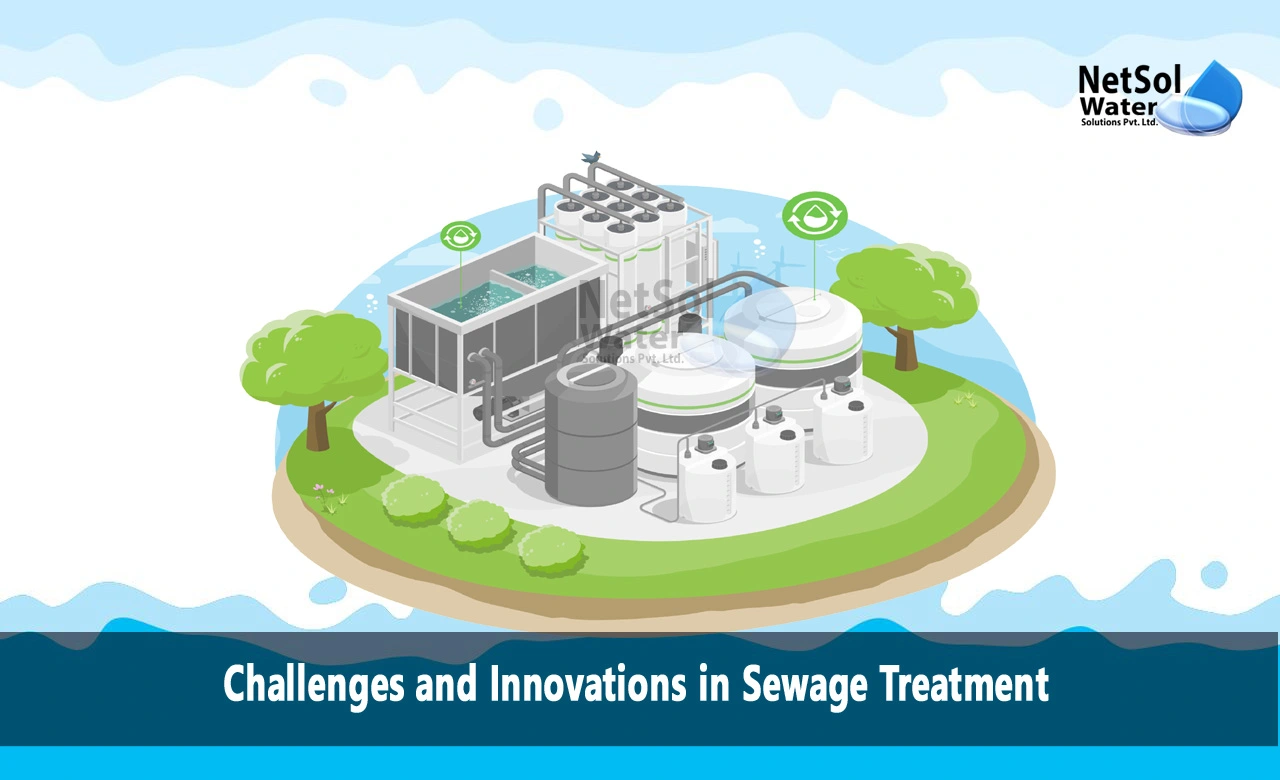What are the Challenges and Innovations in Sewage Treatment?
Sewage treatment is a critical service that protects human and environmental health. As populations grow, keeping pace with ever-increasing volumes of sewage poses substantial challenges for treatment plant operators. Ageing infrastructure is often pushed to the limits of its capacity, while tighter regulations demand improvements in effluent quality. At the same time, plants strive to minimise costs, energy consumption and waste by products.
Implementing innovations and upgrades is imperative but costly. Nevertheless, solutions are helping treatment facilities worldwide overcome these challenges. We explore the key issues modern plants face and highlights some of the advances that are helping to address them.
Challenges Faced by Modern Treatment Plants
Overloaded Systems
Many sewage systems, especially in developing countries, are chronically overloaded. Treatment capacity cannot keep up with population growth, leading to equipment failures, pipe blockages, untreated sewage discharges and health hazards. Even systems designed for larger capacities can become overloaded when ageing equipment fails. Plants require expanded capacity along with upgrades and improved maintenance.
Ageing Infrastructure
Much of the sewer infrastructure in the developed world was built decades ago and is now operating well past its intended lifespan. Pipes crack and leak; pumps, screens and digesters wear out. Failures lead to untreated overflows, equipment damage from grit, and breakdowns of biological processes. Full system renovations are expensive and disruptive. Better assessment tools and surgical upgrades can optimise limited budgets.
Tightening Regulations
Regulations on effluent quality and health and environmental standards are becoming stricter globally. For example, limits are lowered on nitrogen, phosphorus, and harmful pathogens before they are discharged into natural water bodies. Meeting higher standards requires retrofitting or building tertiary treatment stages like nutrient removal and filtration systems. This implies significant additional investment.
Operational Costs
Chemicals, energy and sludge disposal account for up to 80% of a plant’s operating budget. Rising expenditures strain limited municipal budgets. Optimising processes, monitoring chemical doses, minimising waste volumes, and incorporating renewable energy such as sewage-gas-fueled combined heat and power units can realise significant cost savings.
Innovations to Address Key Challenges
Automation and AI
Sophisticated sensors connected to AI-enhanced software platforms are revolutionising monitoring and control systems. Machine learning algorithms can optimise chemical dosing, aeration, pumping, predictive maintenance, and more while generating real-time performance analytics. This boosts efficiency, reliability and rapid incident response. AI is even being applied to design systems.
Advanced Materials
Pipes, screens, tanks and other components from improved anti-corrosive materials such as fibreglass and plastics substantially extend service life. Coatings, lubricants and modular construction further aid longevity. Nanotech and engineered biofilms are enabling self-cleaning membranes for ultrafiltration. Materials science innovations translate into sizable economic benefits over time.
Sludge Management
No one likes dealing with sludge. But new processing methods are tackling this smelly problem. Enhanced anaerobic digestion, alkaline stabilisation to cut pathogens, thermal hydrolysis, and wet air oxidation dramatically reduce sludge volumes while allowing resource recovery. Dried sludge can fuel waste-to-energy plants. Innovative solutions are converting an environmental liability into eco-friendly products.
Energy Efficiency
Processes optimised by automation alongside innovations like fine-bubble diffuser aeration, ultraviolet disinfection and integrated heat recovery markedly curtail energy demand. Co-digesting fats/oils/grease enables enhanced biogas production for local renewable power generation. Incorporating micro algal bioreactors helps some plants achieve energy neutrality and sell surplus green power.
Alternative Treatment Methods
Altogether, new treatment approaches also show enormous potential. Using woodchips as a base for bacterial communities to break down nitrates has shown remarkable early results. Engineered wetlands act as natural water filters while creating wildlife habitat. Compact modular reservoirs applying electrochemical processes avoid chemicals entirely. Such alternative methods may be deployed in decentralised systems for small communities.
Conclusion
Rising volumes of sewage mixed with ageing infrastructure present considerable challenges to treatment plant operators globally. However, tightening regulations demand ever-better effluent quality to protect precious water resources and public health. Costs must simultaneously be contained.
Do you need an advice or assistance on selecting the best water and waste water treatment unit? We have solutions for all your problems!
Let us know your problem, our experts will make sure that it goes away.
For an assistance or related query,
Call on +91-965-060-8473 Or write us at enquiry@netsolwater.com



